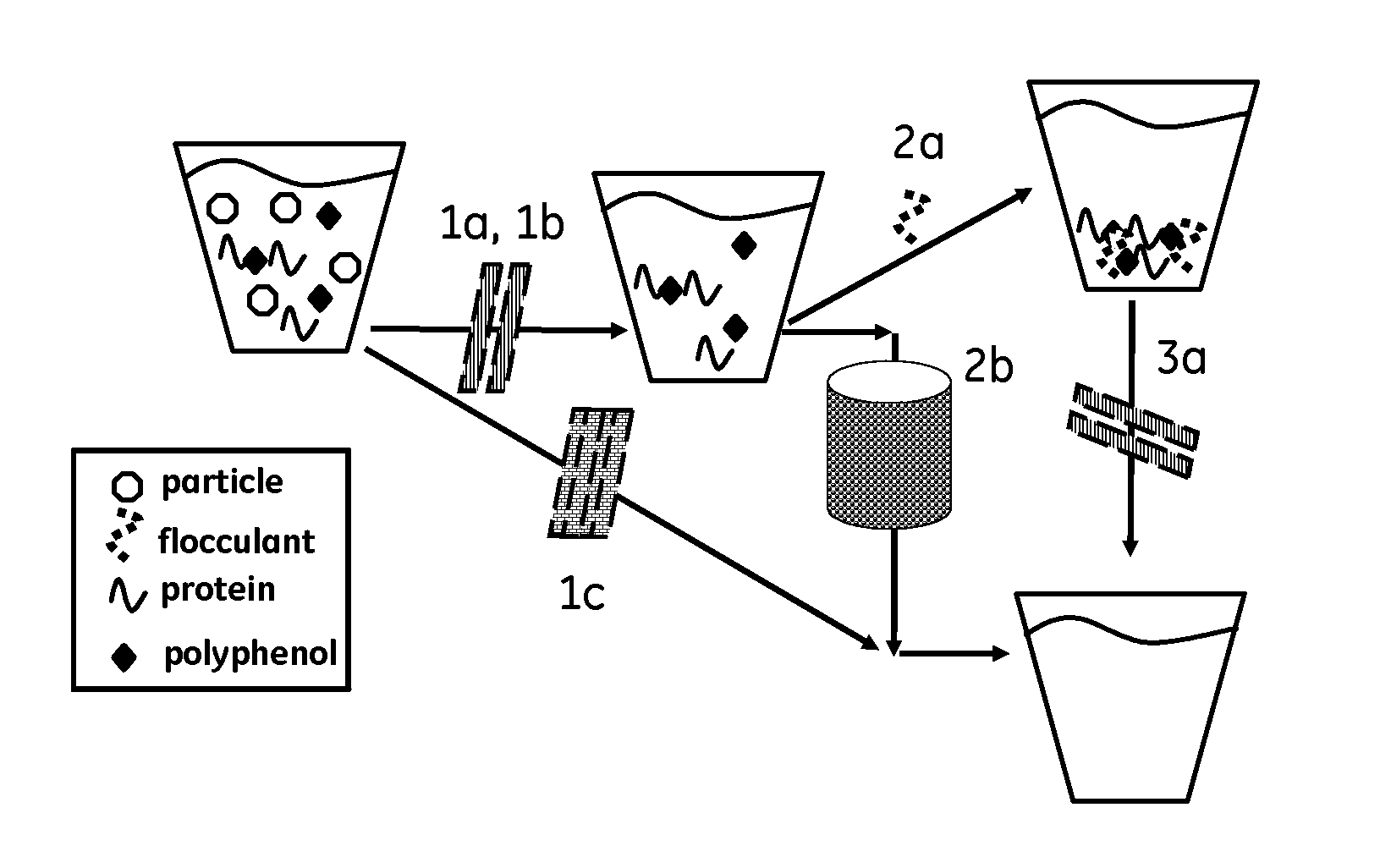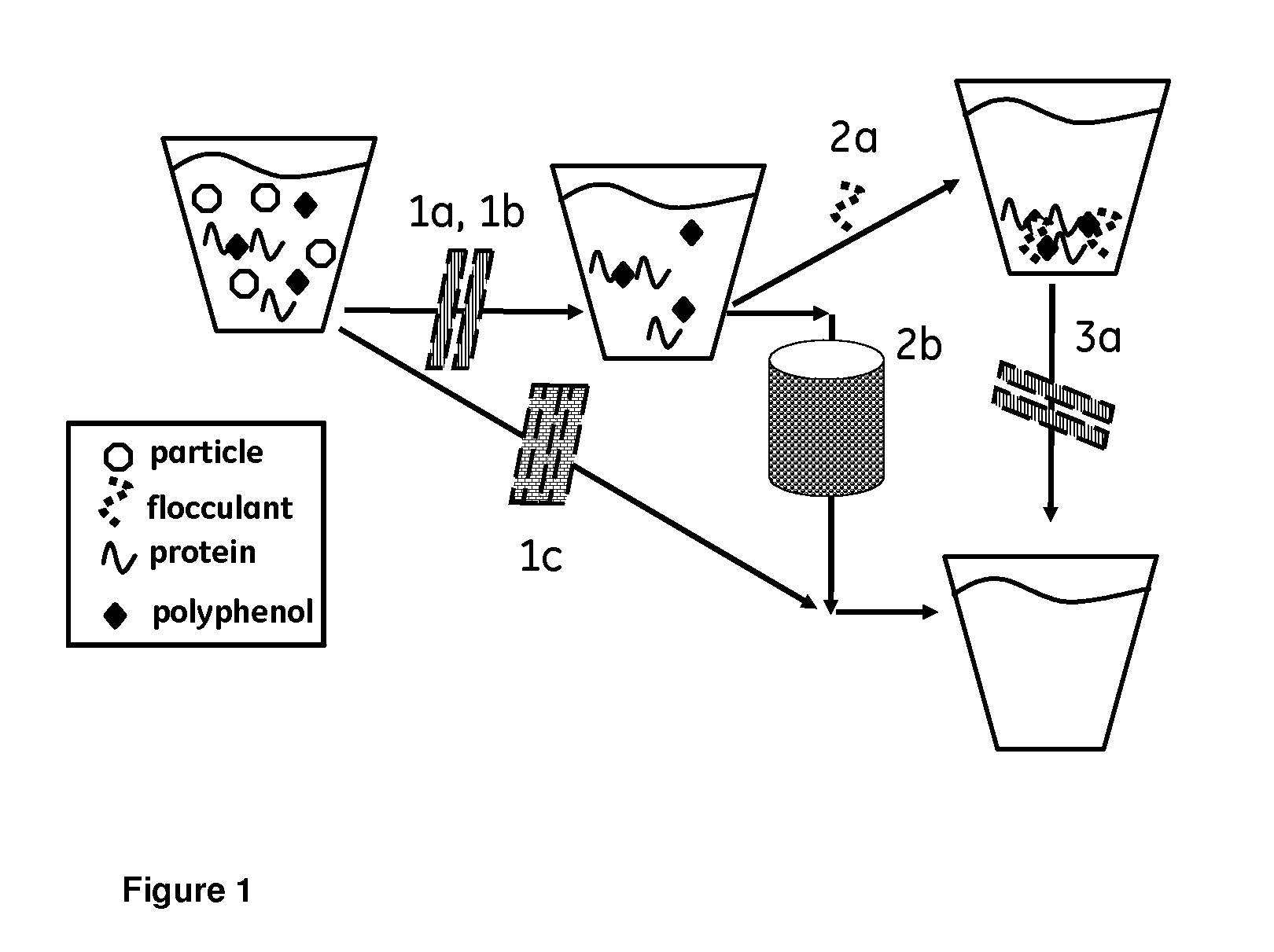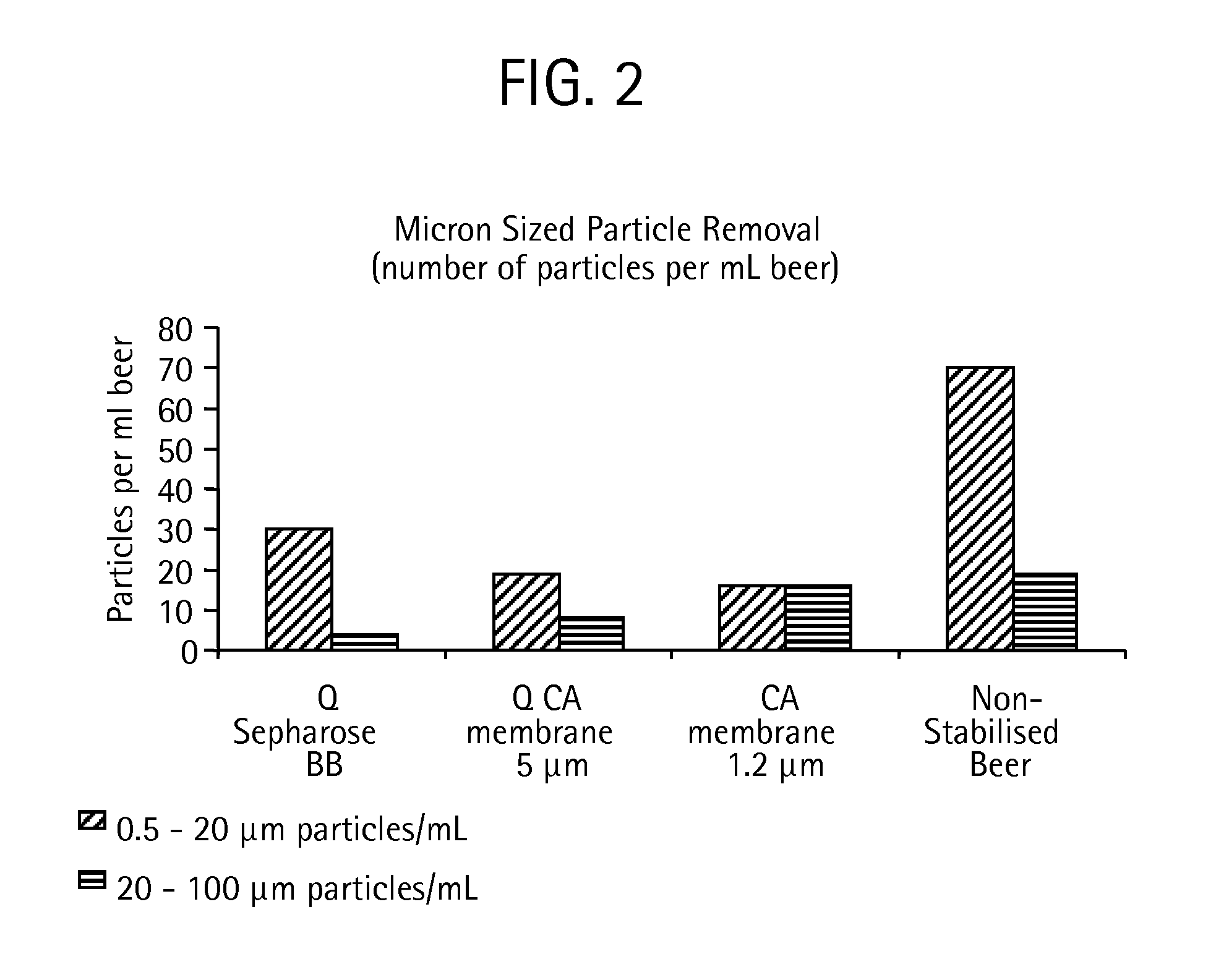Method for liquid processing
a liquid processing and liquid technology, applied in the field of liquid clarification and stabilization, can solve the problems of limiting the life of the liquid to one or two runs, the value of the liquid may not compare favorably with the filtration device, and the price of the particles is rather high, so as to achieve more cost-effective effects
- Summary
- Abstract
- Description
- Claims
- Application Information
AI Technical Summary
Benefits of technology
Problems solved by technology
Method used
Image
Examples
examples
[0064]The present examples are presented herein for illustrative purpose only, and should not be constructed to limit the invention as defined by the appended claims.
[0065]Unfiltered and non-stabilized beer was chosen as representative process fluid prone to the dual challenges of a need for both clarification and stabilization against chill haze formation.
[0066]Experiments were done with control commercial reference media and several different prototypes which included both chromatography particles and filters. Filters capable of filtering one size of particle are generally applicable to similar challenges. The general ability of the stabilization results to be related to wider range of process streams, and if need be reproduced in other laboratories, was ensured by not only stabilizing beer but also measuring the ability of the various filters and chromatographic particles to remove pure chemical reagents analogous in structure to monomeric and dimeric polypheno...
PUM
| Property | Measurement | Unit |
|---|---|---|
| pore size | aaaaa | aaaaa |
| volumes | aaaaa | aaaaa |
| volumes | aaaaa | aaaaa |
Abstract
Description
Claims
Application Information
 Login to View More
Login to View More - R&D
- Intellectual Property
- Life Sciences
- Materials
- Tech Scout
- Unparalleled Data Quality
- Higher Quality Content
- 60% Fewer Hallucinations
Browse by: Latest US Patents, China's latest patents, Technical Efficacy Thesaurus, Application Domain, Technology Topic, Popular Technical Reports.
© 2025 PatSnap. All rights reserved.Legal|Privacy policy|Modern Slavery Act Transparency Statement|Sitemap|About US| Contact US: help@patsnap.com



